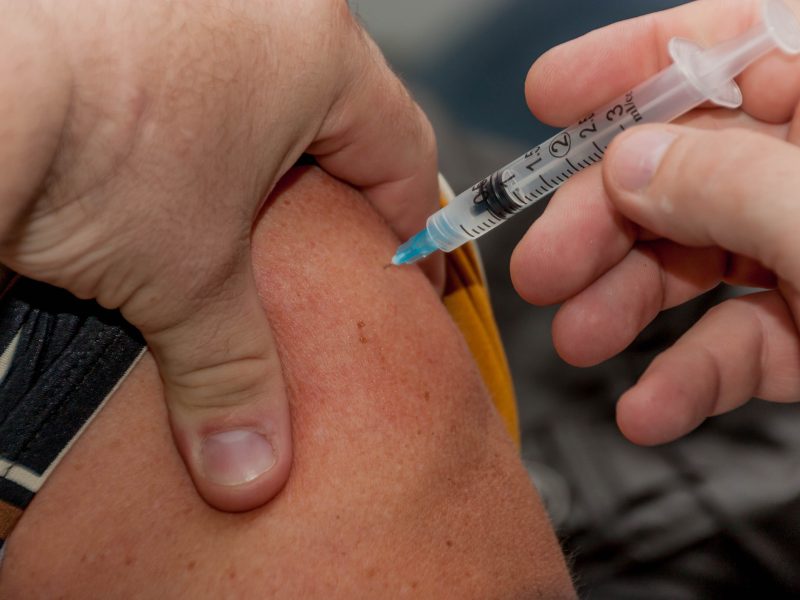Diabetes is a chronic disease that affects millions of people worldwide. It occurs when the body is unable to properly regulate blood sugar levels, leading to high blood sugar levels that can cause a variety of health problems. While many people have heard of this condition, not everyone understands what it is, how it develops, or how it can be managed. That’s why in this blog post, we’ll be discussing the basics of diabetes, including its definition, symptoms, diagnosis, complications, treatment, and prevention. Understanding this condition is essential for everyone, whether you are living with the disease or not. With the right knowledge and tools, we can work together to prevent and manage this increasingly common health condition.
Definition of Diabetes
Diabetes is a chronic disease that affects the way your body processes glucose, a type of sugar that is your body’s main source of energy. When you eat, your body breaks down carbohydrates into glucose, which is then absorbed into your bloodstream. Your pancreas produces a hormone called insulin, which helps your cells absorb and use glucose for energy. In people with this condition, their body either doesn’t produce enough insulin or doesn’t use it properly, leading to high blood sugar levels.
Three Main Types of Diabetes
- Type 1 diabetes: occurs when the body’s immune system attacks and destroys the cells in the pancreas that produce insulin, resulting in a complete deficiency of insulin.
- Type 2 diabetes: occurs when the body becomes resistant to insulin, or when the pancreas is not able to produce enough insulin to meet the body’s needs.
- Gestational diabetes: occurs during pregnancy and usually goes away after the baby is born.
The exact causes of diabetes are not fully understood, but several risk factors have been identified, including:
- Family history of the condition
- Obesity or being overweight
- Sedentary lifestyle
- Age (risk increases with age)
- Race/ethnicity (certain groups, including African Americans, Hispanic/Latino Americans, and Asian Americans, are at higher risk)
In addition, certain medical conditions and medications can also increase the risk of developing the condition. It’s important to talk to your doctor about your risk factors and get tested for diabetes if you have any concerns.
Symptoms and Diagnosis of Diabetes
Symptoms of diabetes can vary depending on the type and severity of the disease. Some common symptoms include:
- Increased thirst and hunger
- Frequent urination
- Fatigue
- Blurred vision
- Slow healing of cuts or wounds
- Numbness or tingling in the hands or feet
In type 1 diabetes, symptoms can develop quickly and become severe, while in type 2 diabetes, symptoms may develop gradually and be less noticeable.
If you have any of these symptoms, it’s important to talk to your doctor about getting tested for diabetes. The following tests are commonly used to diagnose this condition:
- Fasting plasma glucose (FPG) test: Measures your blood glucose level after an overnight fast.
- Oral glucose tolerance test (OGTT): Measures your blood glucose level before and 2 hours after drinking a sugary drink.
- Haemoglobin A1c (HbA1c) test: Measures your average blood glucose level over the past 2-3 months.
Your doctor may also order additional tests to determine the type and severity of your diabetes and to check for any complications. It’s important to get tested for this condition regularly, especially if you have risk factors such as a family history of diabetes, obesity, or a sedentary lifestyle. Early diagnosis and treatment can help prevent or delay the onset of complications.
Complications of Diabetes
The condition can lead to a wide range of short-term and long-term complications, affecting various parts of the body. Some short-term complications can include:
- Hypoglycemia (low blood sugar): can occur when blood sugar levels drop too low, leading to symptoms such as shakiness, dizziness, and confusion.
- Hyperglycemia (high blood sugar): can occur when blood sugar levels are too high, leading to symptoms such as frequent urination, fatigue, and blurred vision.
- Diabetic ketoacidosis (DKA): a life-threatening condition that can occur in people with type 1 diabetes when the body breaks down fat for energy instead of glucose, leading to high levels of ketones in the blood.
Long-Term Complications
- Cardiovascular disease: this condition increases the risk of heart attack, stroke, and other cardiovascular problems.
- Neuropathy: high blood sugar levels can damage the nerves in the feet and legs, leading to numbness, tingling, and pain.
- Nephropathy: high blood sugar levels can damage the kidneys, leading to kidney failure.
- Retinopathy: high blood sugar levels can damage the blood vessels in the retina, leading to vision problems and even blindness.
- Foot ulcers and amputations: nerve damage and poor blood flow in the feet and legs can lead to foot ulcers that can become infected and may require amputation.
Diabetes can also affect other parts of the body, such as the digestive system, skin, and teeth. It’s important to work closely with your doctor to manage the condition and prevent or delay the onset of complications. This may involve making lifestyle changes such as adopting a healthy diet, exercising regularly, and taking medications as prescribed. Regular check-ups and monitoring of blood sugar levels can also help identify and address any complications early on.
Treatment and Management of Diabetes
The treatment and management of this condition depend on the type and severity of the disease, as well as individual factors such as age, overall health, and personal preferences.
Medications Used to Manage Diabetes
- Insulin: used in type 1 diabetes and sometimes in type 2 diabetes to replace or supplement the body’s insulin production.
- Oral medications: used in type 2 diabetes to help the body use insulin more effectively or to stimulate the pancreas to produce more insulin.
Lifestyle Changes for Diabetes Management
- Diet: adopting a healthy diet that is low in sugar, refined carbohydrates, and saturated fats can help manage blood sugar levels.
- Exercise: regular physical activity can help improve insulin sensitivity and manage blood sugar levels.
- Weight management: maintaining a healthy weight can help prevent or manage type 2 diabetes.
- Blood sugar monitoring: regularly checking blood sugar levels can help identify patterns and make adjustments to medications or lifestyle as needed.
Alternative treatments for this condition, such as herbal supplements and acupuncture, are not recommended as a primary form of treatment and should always be discussed with a healthcare provider. However, some alternative treatments may have potential benefits for managing blood sugar levels, such as:
- Chromium: a mineral that may help improve insulin sensitivity.
- Cinnamon: a spice that may help lower blood sugar levels.
- Yoga and meditation: stress reduction techniques can help improve overall health and may also help manage blood sugar levels.
It’s important to work closely with your healthcare provider to develop a diabetes management plan that is tailored to your individual needs and preferences. With the right treatment and management approach, it is possible to live a healthy and fulfilling life with this condition.
Prevention of Diabetes
Prevention of diabetes is an important aspect of maintaining good health, especially for individuals who have a family history of the disease or are at high risk due to lifestyle factors such as obesity or physical inactivity.
Tips for Preventing Diabetes
- Maintain a healthy diet: eating a balanced diet that is rich in whole grains, fruits, and vegetables and low in processed foods and added sugars can help reduce the risk of developing type 2 diabetes.
- Exercise regularly: physical activity can help improve insulin sensitivity and manage blood sugar levels. Aim for at least 150 minutes of moderate-intensity exercise per week.
- Maintain a healthy weight: being overweight or obese is a major risk factor for type 2 diabetes. Losing just 5-10% of your body weight can significantly reduce your risk.
- Quit smoking: smoking increases the risk of many chronic diseases, including diabetes.
- Monitor blood sugar levels: if you have a family history of this condition or other risk factors, it’s important to regularly check your blood sugar levels to identify any early signs of the disease.
Early diagnosis and treatment are also crucial for preventing the onset of diabetes and its associated complications. Individuals who are at high risk should speak with their healthcare provider about getting screened for this condition. If diabetes is diagnosed, it’s important to work closely with a healthcare team to develop a treatment plan that includes medications, lifestyle changes, and regular monitoring of blood sugar levels.
Preventing diabetes requires a commitment to making healthy lifestyle choices, but the benefits of doing so can be significant, including improved overall health, reduced risk of other chronic diseases, and a better quality of life.
Wrapping Things Up
In conclusion, diabetes is a chronic disease that affects millions of people worldwide, and it is essential to understand its causes, symptoms, and treatment options. We discussed the types of diabetes, the importance of early diagnosis, and the short and long-term complications associated with the disease. Additionally, we explored various treatment options, including medications and lifestyle changes, as well as alternative treatments. Furthermore, we highlighted the importance of preventing this condition through healthy lifestyle choices and regular monitoring of blood sugar levels.
Finally, diabetes education and awareness are crucial for promoting healthy living, preventing complications, and reducing the burden of the disease. By educating ourselves and others about this condition, we can create a supportive environment for those living with the disease and work towards preventing its onset. We must prioritise diabetes education and awareness to reduce the prevalence of the disease and improve the quality of life for individuals living with diabetes.
Read Next
- The Importance of Testosterone and Why We (All) Need It
- Boosting Your Immune System Means Living Your Best Life
- ACL Injuries and Everything You Need to Know
- Manifestation – Universal Energy, Visualisation, and Gratitude
- Why Hormones Play a Key Role in Acne Development
Disclaimer: The information provided on Healthy Lifestyles for All is intended for general educational purposes only and should not be considered as medical advice. Please consult with your GP or other health professional before making any significant changes to your diet, exercise routine, or any other aspect of your lifestyle. We are not responsible for any adverse effects or consequences resulting from the use of the information provided on our blog.
Comments: I hope you enjoyed reading this post as much as I enjoyed writing it. If you liked it, please leave a comment. If you didn’t like it, disagree with something I have written (I’m okay with that), or think I got something wrong (that’s okay too), please leave a comment as well. We only truly learn from our mistakes, so I am happy to have mine pointed out.
Affiliate Links: Please also note that I may make a small amount of money if you buy one of the products I recommend in any of my blog posts. Rest assured that I have done my own due diligence, and only recommend products that have been tried and tested, and have extremely good feedback. Additionally, many of the products I recommend have 30 or 60-day money-back guarantees, so you can buy in the confidence that if a particular product is not right for you, you can get a refund.

